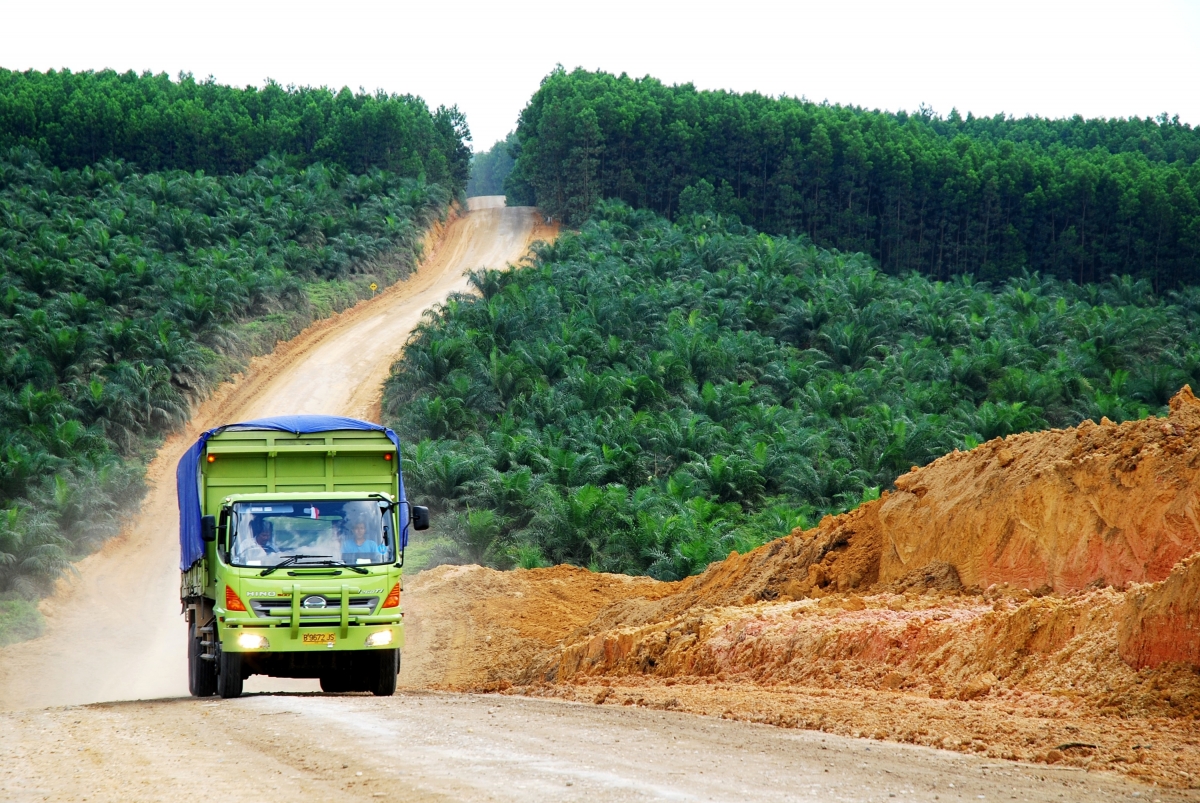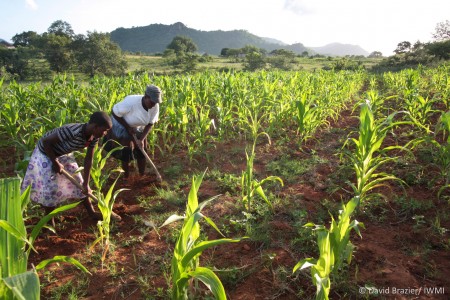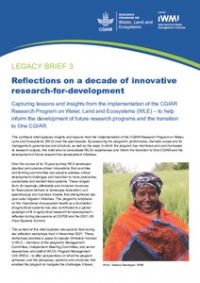
Palm oil production on the Indonesian island of Sumatra is on a one-way trip to disaster, according to a new study into the effects of smallholder farmers on the rainforests of Southeast Asia. Unless farmers are urgently given financial incentives to harmonise their activities with the landscape they inhabit, “there is a risk that rich and productive agricultural land will have disappeared altogether in 20 years,” says the study’s author Yann Clough of Lund University in Sweden.
The findings are stark, and maybe not so surprising, given that Sumatra has been losing rainforests faster than almost anywhere on Earth for the past two decades. Outside protected areas, forest cover has decreased by more than 75 percent since 1990. What will be surprising to many is that the brutal prognosis is offered not for large-scale monoculture plantations but for smallholders who operate in mosaic landscapes where their farms are apparently integrated with natural forests and agroforestry.
But looks can be deceptive. The study “contradicts the traditional view that small-scale agriculture is environmentally friendly,” says Clough. The conclusion seems to be that farm style is more important for forest health than farm size. Monocultures are damaging at any scale.
Clough’s analysis – co-authored with more than 40 researchers from Indonesia, Switzerland, Germany, New Zealand and Sweden – looks at the relative economic and ecological benefits of smallholder palm-oil production as well as rubber monocultures and growing rubber in agroforestry settings, which he terms “jungle rubber”.
The study analysed production methods and ecosystem function, including soil fertility, carbon storage, and sustainability; it involved interviewing some 450 smallholders in Jambi province, which has been on the front line of forest conversion in Sumatra in the past 20 years. It may be the first such interdisciplinary study to concentrate on smallholder palm oil producers’ impact on biodiversity and ecosystem services.
Clough found that “Indonesian smallholders predominantly choose farm portfolios with high economic productivity but low ecological value… The more profitable oil palm and rubber monocultures replace forest and agroforests [that are] critical for maintaining ecological functions.”
The incentives for this approach are clear. “For the great majority of small farmers, chopping down diverse forests and investing in a single species of tree is the simplest and quickest path out of poverty,” says Clough. While rubber agroforestry has persisted, it is being replaced by rubber monocultures. And business has been good. Poverty is lower in rural Jambi than in urban areas across Indonesia. As a result, migrants have been moving in.
The study found that palm oil production, even among smallholders, is highly input-intensive but uses little outside labour, whereas rubber planting is labour-intensive but uses fewer chemical inputs. In that sense, they complement each other across a mosaic landscape.
But with regard to current trends, the study found that “primary forests, secondary forest and jungle rubber have little future in smallholder dominated landscapes.” In other words, without change, the current mosaic landscape is simply a transitional stage to the outright loss of forests and their replacement with monocultures. The fact that the system is dominated by smallholders makes little difference.
The system is transitional in another sense, too. The preponderance of monocultures is causing soils to erode, organic matter to decline, nutrients to leach away, water shortages to emerge and biodiversity to collapse. “Oil-palm plantations will increasingly be dependent on fertilization and liming,” says Clough. In the meantime, in a classic tragedy of the commons, smallholders appear doomed to extract as much profit as they can before the ecosystem collapses and economic disaster follows.
In theory, the government in Jakarta wants to do something to prevent the worst, by sparing forests and preserving ecosystem services. Jambi is part of an area designated by the Ministry of Public Works for ecosystem-based spatial planning. REDD+ projects in the country open up the possibility of paying farming communities to protect natural forests and maintain carbon stocks in the landscape.
But Clough concludes that at present, “concrete incentives to conserve natural capital and ecosystem services in smallholder dominated landscapes are absent… And REDD+ may not be economically attractive… as an alternative to oil palm development.”
The government also wants to intensify smallholder farming as a way to spare natural forests in Sumatra, says Clough. But “it could simply reinforce negative environmental impacts of monocultures, without gains in productivity being translated to increases in land spared for forests.” For such an approach to succeed, rewards for environmental protection will need to be substantially higher, and environmental regulation much tougher.
The findings are important because, as in Jambi, smallholders are the main producers elsewhere in Sumatra and across Indonesia. These findings could also have implications for landscapes in sub-Saharan Africa, where palm oil cropping is expanding rapidly. Mosaics may not be stable landscapes; until properly incentivised, smallholders may not provide any advantages in preserving ecosystem functions.
The publication of the study coincides with another major analysis showing how destructive and short-sighted the drive for monocultures is. How, round the world, forest biodiversity sustains forest economic yields, while monocultures destroy timber yields.
The aforementioned study—the first global assessment of its type—covers tropical rainforests, dry savannas, tundra, mangroves and Mediterranean forests, among others, and analyses timber inventories stretching back in some cases for more than 150 years. Its lead author, Hans Pretzsch of the Technical University of Munich, concluded that in everywhere surveyed, “a decline in the number of species [in forests] leads to massive cuts in the productivity of forests, whereas monocultures converted into mixed stands can yield significantly higher yields of timber growth…
When the number of species declines by 10 per cent, the wood production decreases on average by 6 to 7 per cent.” In one example, he notes that Germany’s reliance on monocultures of spruce and pine in the 1950s and 1960s, intended to boost production, instead cut output.
We knew ecosystem function required diversity rather than monocultures. But the lesson that economic function requires the same is only gradually being learned.





/index.jpg?itok=EzuBHOXY&c=feafd7f5ab7d60c363652d23929d0aee)











